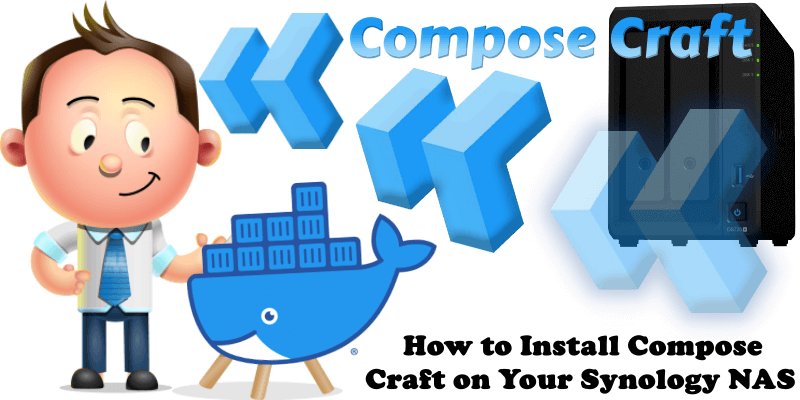
Compose Craft is a tool to help you manage, edit and share docker compose files in a GUI way. Bring your own docker compose files with instant process time and drag and re-order components. In this step by step guide I will show you how to install Compose Craft on your Synology NAS using Docker & Portainer.
STEP 1
Please Support My work by Making a Donation.
STEP 2
Install Portainer using my step by step guide. If you already have Portainer installed on your Synology NAS, skip this STEP. Attention: Make sure you have installed the latest Portainer version.
STEP 3
Go to File Station and open the docker folder. Inside the docker folder, create one new folder and name it composecraftdb. Follow the instructions in the image below.
Note: Be careful to enter only lowercase, not uppercase letters.
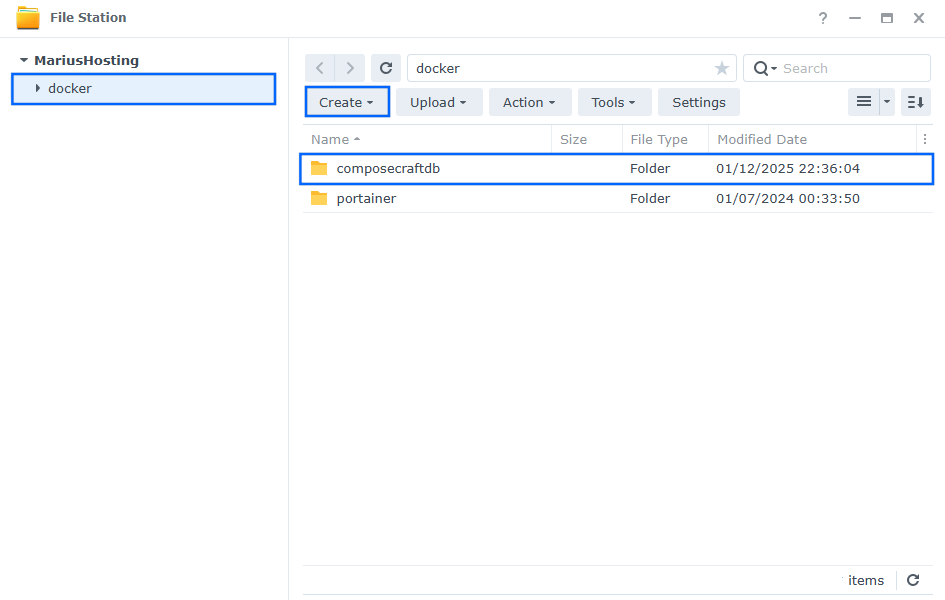
STEP 4
Log into Portainer using your username and password. On the left sidebar in Portainer, click on Home then Live connect. Follow the instructions in the image below.

On the left sidebar in Portainer, click on Stacks then + Add stack. Follow the instructions in the image below.

STEP 5
In the Name field type in composecraft. Follow the instructions in the image below.
services:
db:
image: mongo:4.4
container_name: Compose-Craft-DB
healthcheck:
test: echo 'db.stats().ok' | mongo localhost:27017/test --quiet
interval: 10s
timeout: 10s
retries: 5
environment:
- MONGO_INITDB_ROOT_USERNAME=marius
- MONGO_INITDB_ROOT_PASSWORD=mariushosting
ports:
- 27017:27017
volumes:
- /volume1/docker/composecraftdb:/data/db:rw
composecraft:
image: composecraft/composecraft:latest
container_name: Compose-Craft
healthcheck:
test: ["CMD-SHELL", "nc -z 127.0.0.1 3000|| exit 1"]
interval: 10s
timeout: 5s
retries: 3
start_period: 90s
ports:
- 3784:3000
environment:
- CORE_ONLY=true
- URL=http://localhost:3000
- SECRET_KEY=dOxZYTTZgXKMHkqLBIQVImayQXAVWdzGBPuFJKggzcgvgPJPXpWzqzKaUOIOGGIr
- MONGODB_URI=mongodb://marius:mariushosting@db
depends_on:
- db
Note: Before you paste the code above in the Web editor area below, change the value for MONGO_INITDB_ROOT_USERNAME and MONGODB_URI. Type in your own username for both values; they have to be identical. marius is an example for a username.
Note: Before you paste the code above in the Web editor area below, change the value for MONGO_INITDB_ROOT_PASSWORD and MONGODB_URI. Type in your own username for both values; they have to be identical. mariushosting is an example for a password.
Note: Before you paste the code above in the Web editor area below, change the value for SECRET_KEY. (Generate your own Random 64 length SECRET_KEY.)
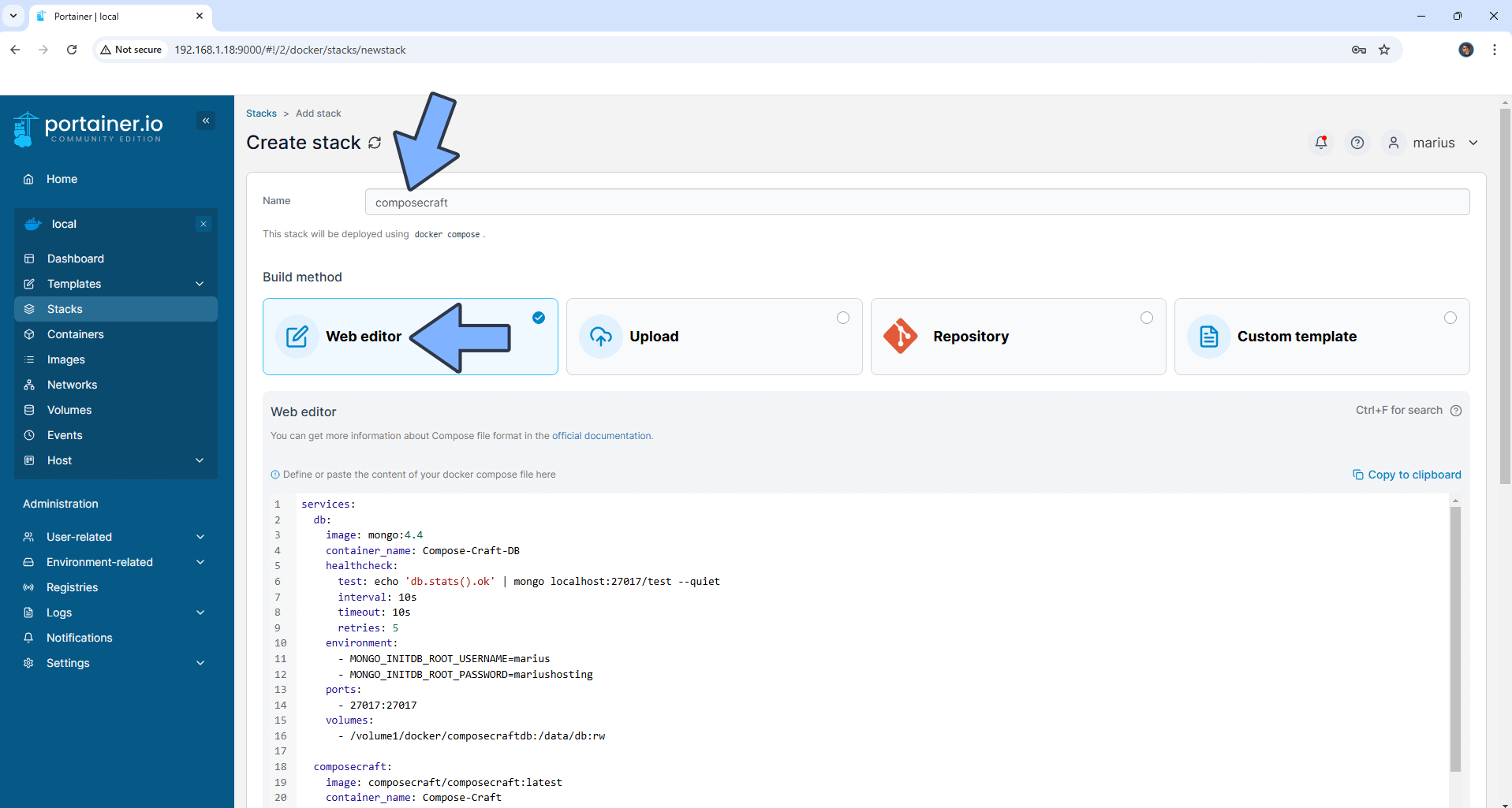
STEP 6
Scroll down on the page until you see a button named Deploy the stack. Click on it. Follow the instructions in the image below. The installation process can take up to a few minutes. It will depend on your Internet speed connection.
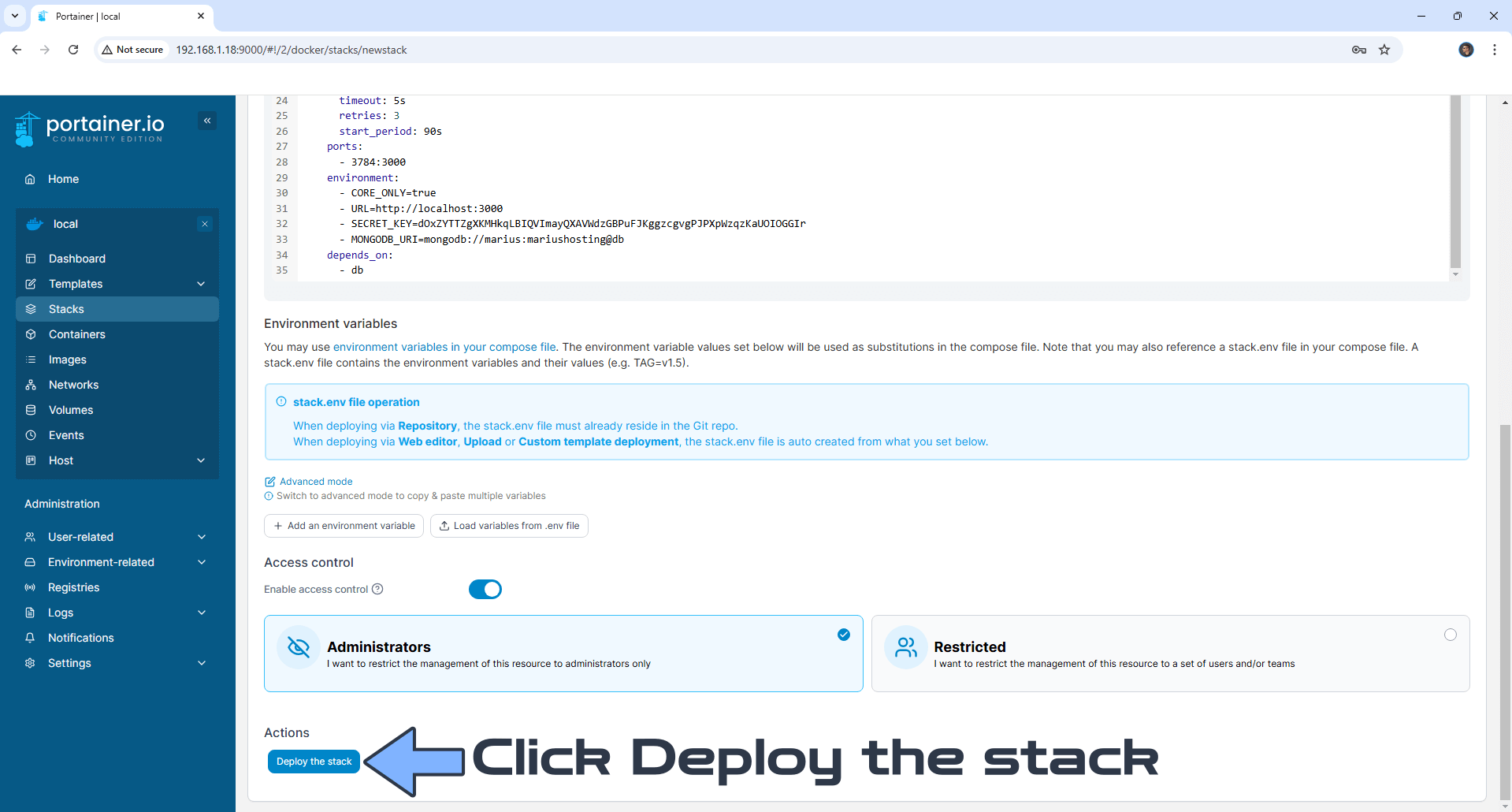
STEP 7
If everything goes right, you will see the following message at the top right of your screen: “Success Stack successfully deployed“.

STEP 8
Please Support My work by Making a Donation. Almost 99,9% of the people that install something using my guides forget to support my work, or just ignore STEP 1. I’ve been very honest about this aspect of my work since the beginning: I don’t run any ADS, I don’t require subscriptions, paid or otherwise, I don’t collect IPs, emails, and I don’t have any referral links from Amazon or other merchants. I also don’t have any POP-UPs or COOKIES. I have repeatedly been told over the years how much I have contributed to the community. It’s something I love doing and have been honest about my passion since the beginning. But I also Need The Community to Support me Back to be able to continue doing this work.
STEP 9
The installation process can take up to a few seconds/minutes. It will depend on your Internet speed connection. Now open your browser and type in http://Synology-ip-address:3784/signin Type in your own Email address, Password, then select your Company type. Click Create an account. Follow the instructions in the image below.
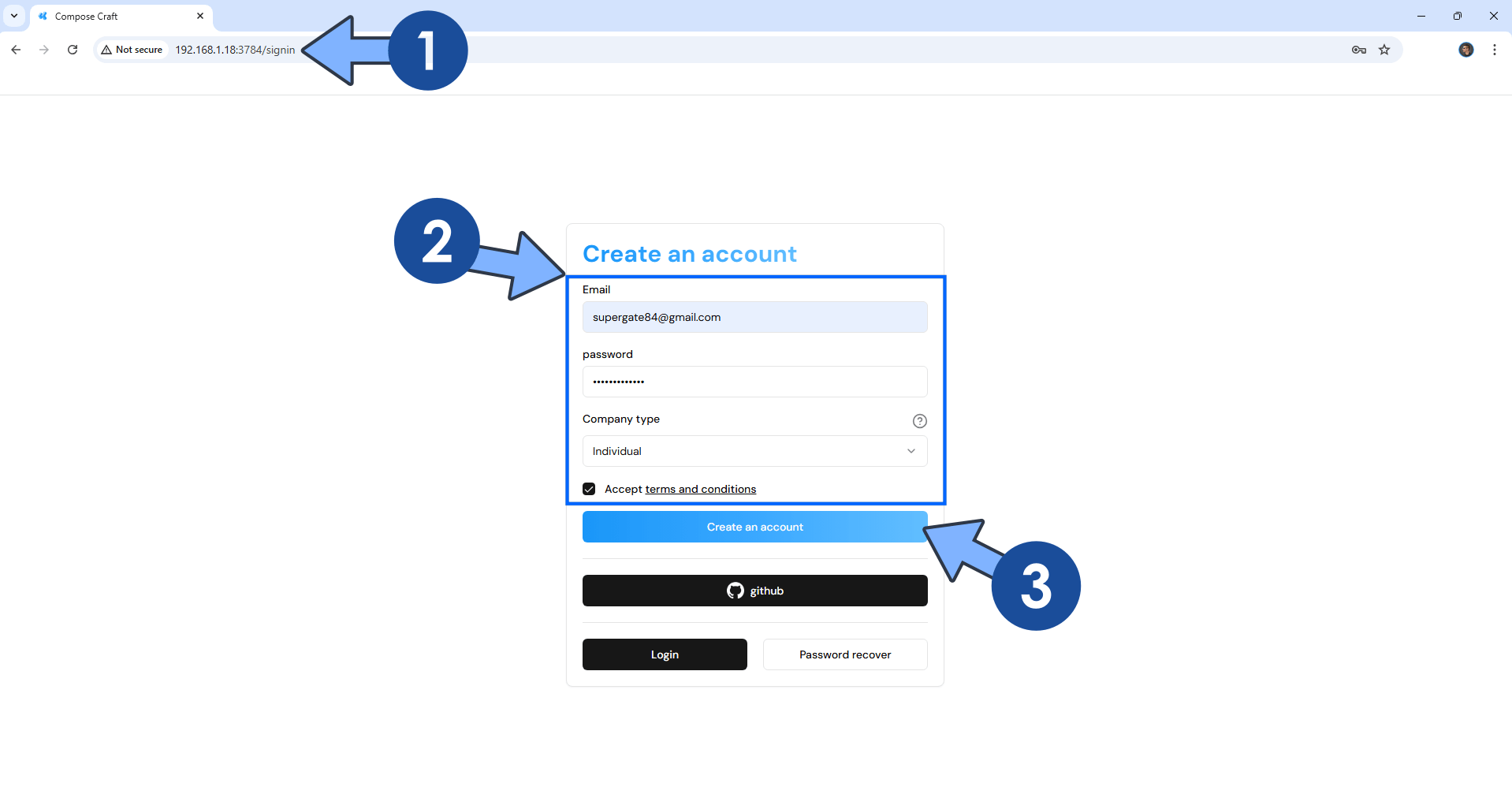
STEP 10
Type in your own Email Address and Password that you have previously created at STEP 9. Click login. Follow the instructions in the image below.
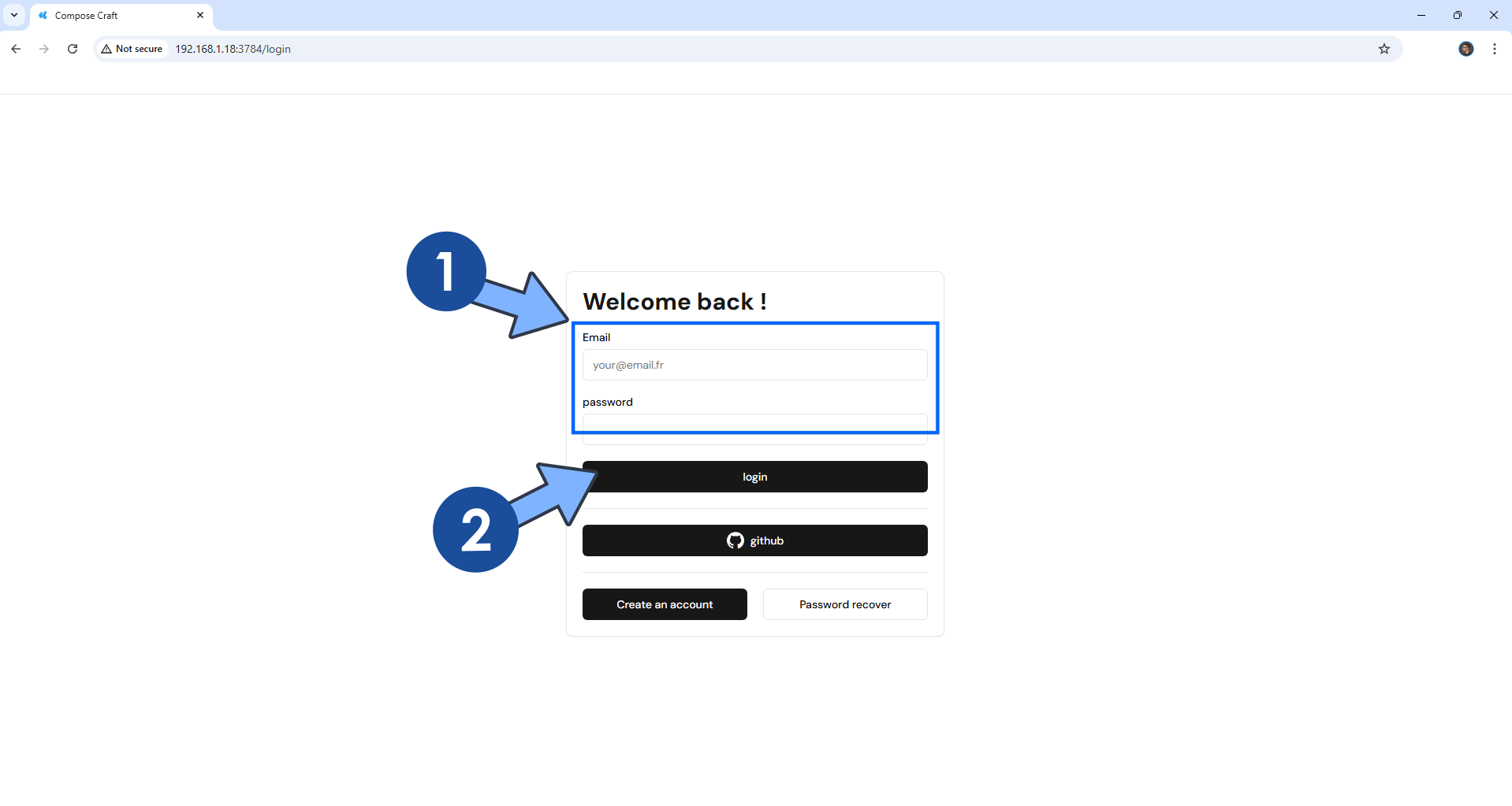
STEP 11
Click Create your first docker compose. Follow the instructions in the image below.
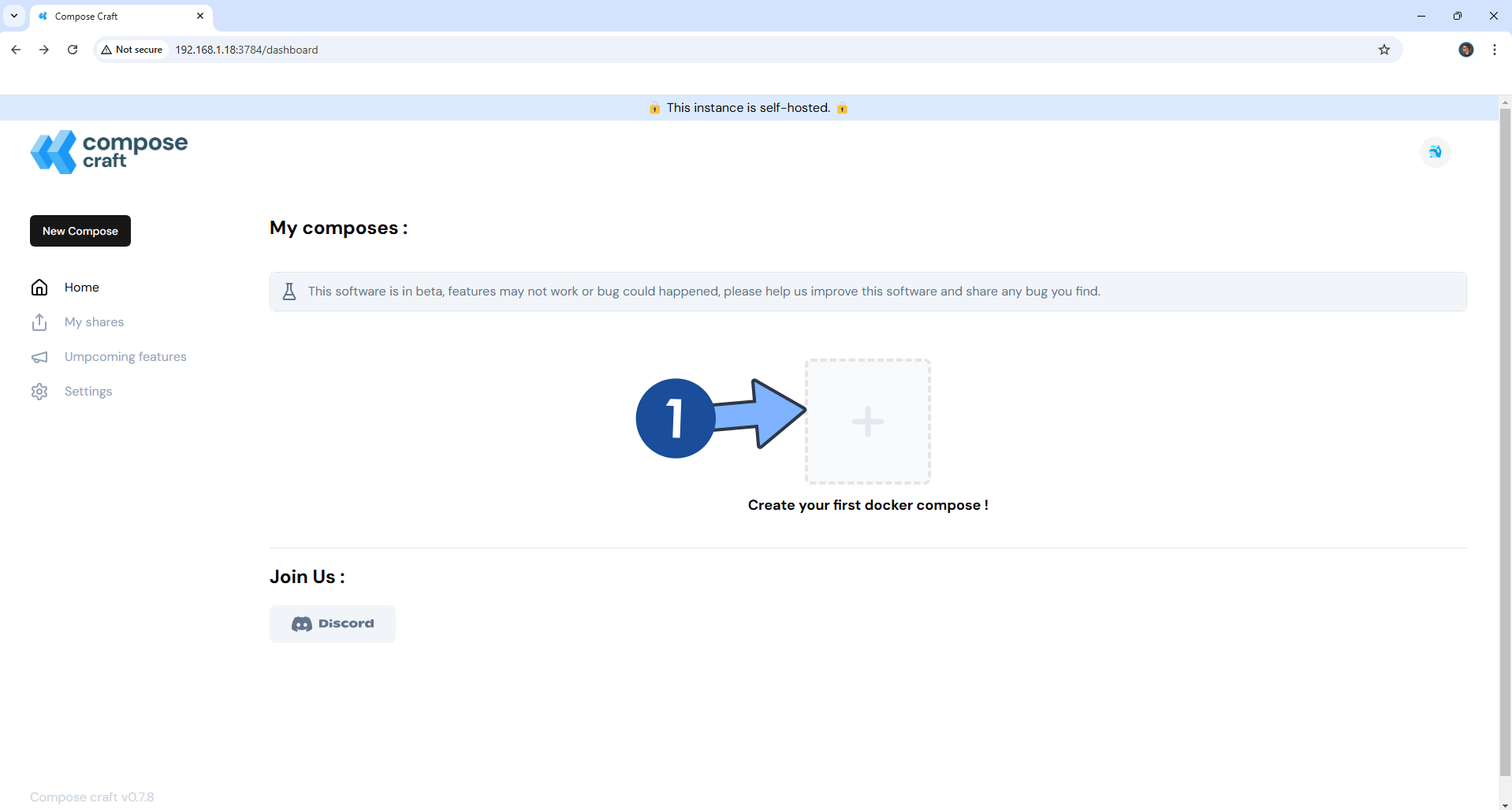
STEP 13
Upload a Docker compose file in a .yml format or create a new one from scratch. Follow the instructions in the image below.
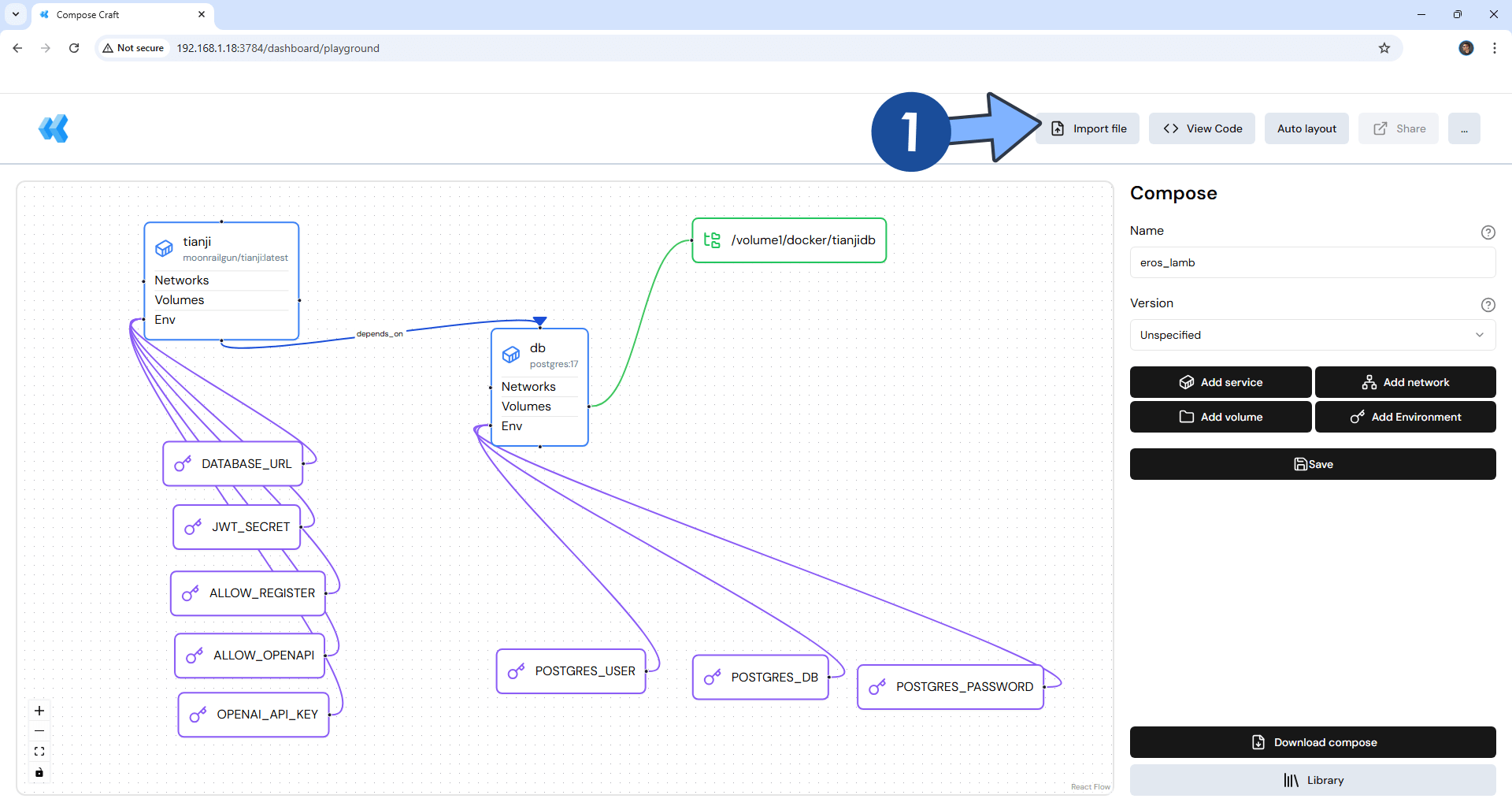
Enjoy Compose Craft!
If you encounter issues by using this container, make sure to check out the Common Docker issues article.
Note: If you want to run the Compose Craft container over HTTPS, check How to Run Docker Containers Over HTTPS. In order to make Compose Craft work via HTTPS, it’s mandatory to activate WebSocket.
Note: Can I run Docker on my Synology NAS? See the supported models.
Note: How to Back Up Docker Containers on your Synology NAS.
Note: Find out how to update the Compose Craft container with the latest image.
Note: How to Free Disk Space on Your NAS if You Run Docker.
Note: How to Schedule Start & Stop For Docker Containers.
Note: How to Activate Email Notifications.
Note: How to Add Access Control Profile on Your NAS.
Note: How to Change Docker Containers Restart Policy.
Note: How to Use Docker Containers With VPN.
Note: Convert Docker Run Into Docker Compose.
Note: How to Clean Docker.
Note: How to Clean Docker Automatically.
Note: Best Practices When Using Docker and DDNS.
Note: Some Docker Containers Need WebSocket.
Note: Find out the Best NAS Models For Docker.
Note: Activate Gmail SMTP For Docker Containers.
This post was updated on Tuesday / August 26th, 2025 at 6:02 PM
